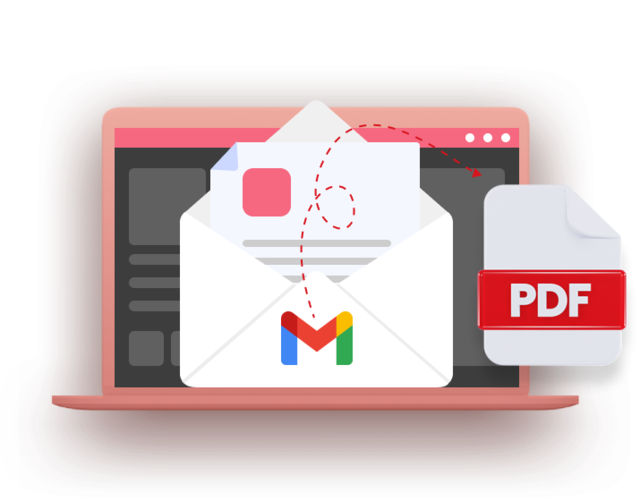Gmail is a popular platform for email in this digital age. But organizing and managing the emails you receive can be difficult. The ability to save email as PDF is a fantastic way to share and preserve important messages.
Why do we save Emails in PDF format?
It is important to understand the reason why it’s essential to save emails in PDF. Portable Document format which is also known as PDF, is an universal format for files. It is widely used because of its reliability and compatibility across devices. By converting your emails to PDF, you can create an image of your contents that preserves the original formatting including attachments, formatting, and overall structure. This makes sure that crucial data is kept intact and helps to share it with others.

How do you save a single Email as PDF in Gmail
1. Open the email: Log into your Gmail Account. Open the email message you want to convert into a PDF.
2. Click the Print Icon. The print icon is usually shown by a device for printing. Select it to launch the Print dialog.
3. Choose “Save as PDF” as the Destination.
4. Adjust Settings (Optional) Before saving, you can change settings such as layout, paper size, and orientation based on your preferences.
5. Click “Save”: Click on the “Save” and then choose the destination folder in order to save the email.
Save Email as PDF – Your Ultimate Guide to Seamless Conversion
Once you’ve learned the basic steps Let’s look at additional suggestions and suggestions to improve your experience when saving emails to PDF in Gmail. For more information, click Save Email as PDF
Organise with Folders: Create dedicated folders for every category in order to keep an organized approach. For instance, you could have folders for emails related to work, personal correspondence, or specific projects. Saving emails as PDF into these folders makes retrieval simple.
The batch printing feature of Gmail allows you to choose multiple emails to print simultaneously. This feature will save you time. It is particularly beneficial when you have to archive entire conversation or project threads.
Name conventions: Make sure you use an identical name for all your PDFs. Include details like the sender’s name, date or subject in order to locate particular files.
Password Protection: To provide additional security, consider password-protecting sensitive PDFs. This will make sure that only authorized users have access to the PDF document which adds a layer to confidentiality.
Cloud Storage Integration: Look into the possibility of integrating your Gmail account with cloud storage services. It is possible to save your emails directly as PDFs using platforms such as Google Drive. This allows users access to them from any location.
Conclusion
Conclusion: The capability to export email messages in Gmail in PDF can enhance ability to manage and organize emails. Converting your email to PDF is a great solution, whether you’re looking to archive important messages or build an information library, or even give information to your colleagues.
The process of mastering it will not only improve your workflow, but will also help you be more efficient and well-organized. If you’re navigating the vast landscape of your email, make use of PDF to archive the messages you send, share them as well as make reference. Keep your emails in a PDF file and experience the most efficient Gmail experience.